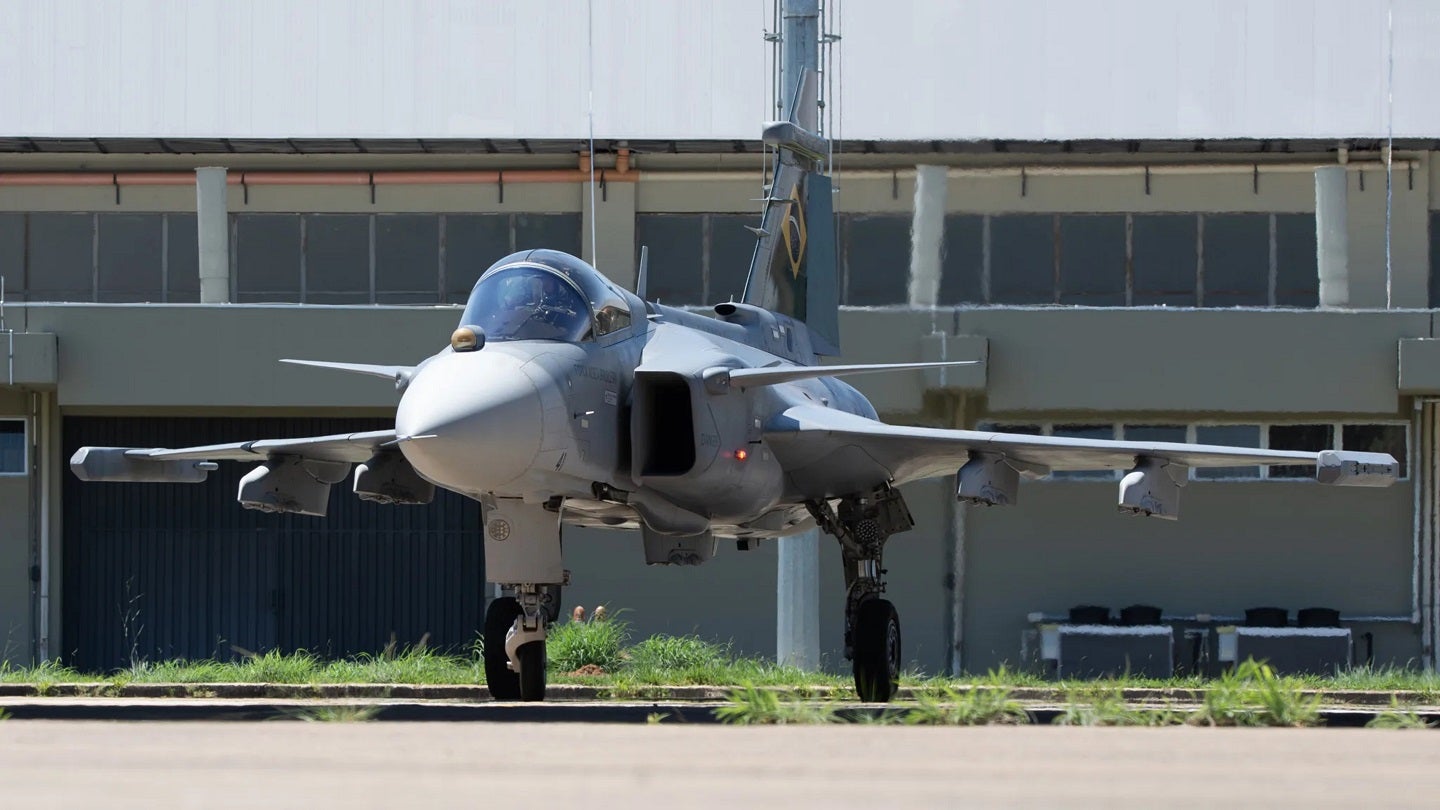
In a move to assess its Infrared Search and Track (IRST) capabilities, the Brazilian Gripen E aircraft, represented by the FAB 4100, recently underwent a series of intensive tests at Anápolis.
The aircraft engaged in simulated aerial battles and demonstrated the IRST system in detecting and locating potential threats.
The dedicated test aircraft, piloted by Saab, took on the mission to locate two other planes—another Gripen E and an F-5—simulating an aerial battle. The objective was to ensure the IRST system’s proficiency in detecting and identifying threats within specified parameters.
Three planned flights, each lasting between 1 and 1.5 hours, unfolded with Saab, Embraer professionals, and Swedish Saab engineers.
Brazilian Air Force Research and Testing Institute test pilots commanded the second Gripen E and the F-5.
Saab signed a deal with the Brazilian government to deliver Gripen E/F multirole aircraft and committed to transferring the technology needed by Brazil to manufacture its military jets, according to GlobalData’s intelligence on the Brazilian defence market.
The Brazilian Air Force officially commenced operational activities with its Gripen E fighter aircraft at the end of 2022.
Martin Leijonhufvud, head of the Gripen Flight Test Center in Brazil, emphasised that these tests were integral to the global campaign for the Gripen E, encompassing all aircraft of this model. The successful collaboration between the fighters aimed to test the IRST and verify the image resolution important for pilot decision-making.
Swedish pilot Jonas Jakobsson expressed satisfaction with the results, highlighting the importance of testing the IRST to understand potential threats and plan appropriate actions. The IRST, situated at the front of the fighter, operates as a passive sensor, detecting and identifying targets at distances based on their infrared signatures. This capability extends beyond aerial scenarios, effectively identifying sea or land objects.
In 2023, the Gripen E fighter, registered as 4100, underwent hot climate testing at Anápolis Air Base. The flight test campaign, part of the global testing initiative for Gripen E, aimed to assess the aircraft’s ability to withstand external heat.








